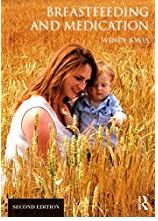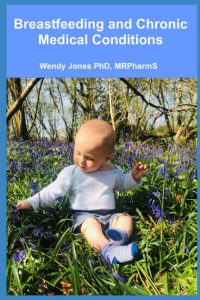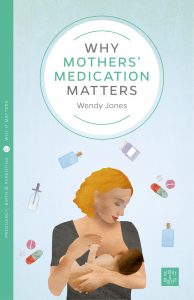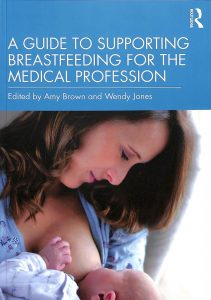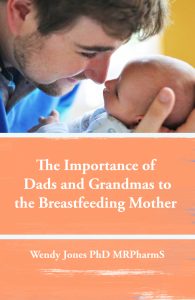I was very proud to have co written a fact sheet for BfN on anxiety and breastfeeding which affects so many new mothers, with my daughter. Beth is a CBT therapist and approached the treatment with non pharmacological methods available via IAPT and IESO (although with a waiting list sadly for most).
I looked at the relief of symptoms with long-term treatments such as SSRI drugs e.g. sertraline, citalopram, fluoxetine and paroxetine. Mothers may also be helped with propranolol to relieve palpitations and racing heart.
Recently there have been more requests from mothers with anxiety or post traumatic stress to take benzodiazepine to reduce symptoms or to treat a panic attack. Occasional use might be acceptable with monitoring of the baby for drowsiness and effective feeding. However, regular use is not encouraged – particularly of diazepam – because of its long half life and potential to accumulate in breastmilk and the baby, but also because this family of drugs is addictive with as little as 28 days treatment.
I have written this factsheet to provide as much information as possible on the use of anxiolytics diazepam, loprazolam and alparazolam during breastfeeding.
anxiolytics and breastfeeding factsheet
The information is taken from Breastfeeding and Medication which includes full references . Please consider buying the book if this information is useful
Anxiolytics can be used to relive anxiety disorders. Management of anxiety is best achieved by non-pharmacological methods such as counselling and cognitive behavioural therapy. Anxiolytics are not as useful to treat acute panic attacks which will dissipate naturally before the drug is absorbed.
Use of anxiolytics in lactating women is generally discouraged due to the possibility of sedation of the infant and consequential reduction in feeding efficacy and limited weight gain
Anti-depressants are used for generalised anxiety disorders, particularly selective serotonin re-uptake inhibitors (SSRIs). Beta blockers such as propranolol may also be beneficial if symptoms of palpitations predominate.
Diazepam ( Valium®)
Diazepam has a long half-life of 43 hours (with terminal metabolite being present for 2 to 5 days) and accumulation is possible with repeated doses. The plasma elimination is further extended in neonates due to poor hepatic function. A shorter-acting anxiolytic is preferable for use particularly in neonates.
Brandt (1976) conducted a study of four post-natal women who were given 10 mg diazepam at bedtime for six nights. He concluded that even with a neonate, a maternal dose of 10 mg produced breastmilk levels too small to cause any untoward effects in the baby. Erkkola and Kanto (1972) studied three infants whose mothers were taking 10 mg diazepam three times daily from delivery. The babies were observed for 6 days during which period no symptoms of sedation were noticed. However, Patrick et al. (1972) reported on a single mother taking the same dose. At 8 days of age (three days after the mother commenced diazepam) symptoms of lethargy, EEG changes and weight loss were apparent in the infant and attributed to the diazepam exposure. Relative infant dose quoted as 7.1% (Hale 2017 online access). It is licensed for use in children only to control convulsions.
Diazepam is also a drug which may be abused in large doses. It is also possible to become addicted with daily doses over just one month.
The BNF suggests that benzodiazepines are present in milk, and should be avoided if possible during breastfeeding.
Single doses of diazepam may also be used in situations such as fear of flying, before surgery or other anxiety provoking situations with continued breastfeeding as normal.
Avoid if possible. Use for a short a time as possible. Observe baby for drowsiness. Avoid falling asleep with the baby in bed on a settee or chair.
Lorazepam (Ativan®)
Lorazepam is 85% bound to plasma proteins and is 90% bio-available. Half-life is reported as 10 to 20 hours. A post-partum study (Summerfield and Nielsen 1985) found clinically insignificant amounts of lorazepam in breastmilk even at a dose of 2.5 mg twice daily for the first 5 days post-natally. Whitelaw et al. (1981) estimated that an exclusively breastfed infant would be exposed to 7 µg per kilogramme per day with a maternal dose of 2.5 mg twice daily The single infant studied showed no signs of sedation. The dose used is in this study is more than the usual maximum of 2 mg daily. Relative infant is dose quoted as 2.5% (Hale 2017 online access). It is licensed for use in children only to control convulsions.
The BNF suggests that benzodiazepines are present in milk, and should be avoided if possible during breastfeeding.
LactMed reports that : Lorazepam has low levels in breastmilk, a short half-life relative to many other benzodiazepines, and is safely administered directly to infants. Evidence from nursing mothers indicates that lorazepam does not cause any adverse effects in breastfed infants with usual maternal dosages and that no special precautions are required.
Using Kelly (2012) data lorazepam may be taken as one of the safer benzodiazepines if use is essential.
Avoid if possible. Use for a short a time as possible. Observe baby for drowsiness. Avoid falling asleep with the baby in bed on a settee or chair. May be preferable to diazepam as it has a shorter half-life and no active metabolites.
Alprazolam (Xanax®)
Alprazolam is a benzodiazepine but preferred due to the shorter half life (12-15 hours). Oo obtained multiple milk and serum samples from eight lactating subjects up to 36 hours after a single oral
doses of 0.5 mg alprazolam. The milk plasma ratio was determined to be 0.36 a level too low to produce clinically significant levels. No outcomes were available as the infants were not breastfed. Reports of withdrawal in infants exposed in utero and breastfed are documented (Anderson 1989).
The BNF states that all benzodiazepines are present in milk, and should be avoided if possible during breast-feeding.
Avoid if possible. Use for a short a time as possible. Observe baby for drowsiness. Avoid falling asleep with the baby in bed on a settee or chair. May be preferable to diazepam as it has a shorter half-life
